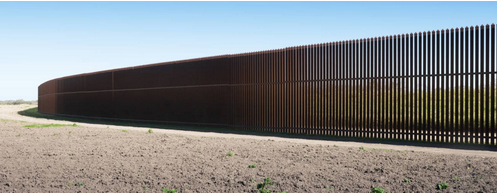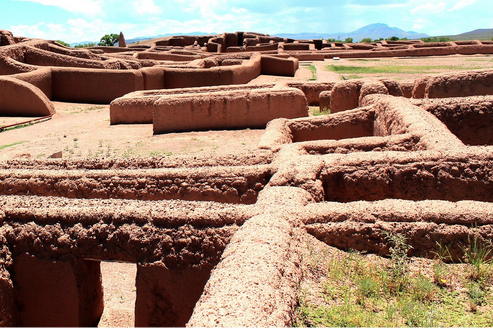
Watching television news, and reading immigration news on my computer, one journalistic fact is as obvious as it is devastating: the wall has completely obliterated immigration coverage.
Studies show that the words “wall,” “border,” and “borders” have increasingly replaced the words “immigration” and “immigrants” in global news coverage of immigration. We no longer hear about the DREAMers, immigrant youth whose activism “won the nation’s hearts and minds” just a couple of years ago. Neither do we hear the stories of Temporary Protected Status holders, migrant women fleeing rape and violence, and other, non-Caravan-riding migrants. Instead, what passes for “immigration reporting” are recent reports about the punitive, racist, Stephen Miller-esque immigration policy approach symbolized and centered by Trump’s wall; reports of Trump visiting the border; reports of Trump ordering “thousands more troops to the Mexican border; and the systematic, ad nauseam repetition of Trump’s immigration rhetoric.
This is part of Trump’s strategy: to separate immigration reporting from the larger, domestic and foreign policy components that define immigration. And it appears to be working: nearly every news story about immigration from Central and South America mentions the wall as a focal point. The wall is a colossal political theater streamed, beamed, and reported so as to distract us from one of the truly colossal failures of the global economic system happening within and beyond this theater: the unprecedented mass global migration whose participants, some experts believe, may number anywhere from 200 million to 1 billion by 2050.
When we fixate on a physical wall, we also introduce a wall in our thinking. Reporting that simplifies the issue of immigration by literally framing it as one that begins and ends at the US-Mexico border excludes crucial information. Trump’s wall has blocked off the biggest borderless immigration story of our lifetimes: climate migration. With some exceptions, the reporting on immigration leaves out experts predicting that the unprecedented global migration will largely be due to the flooding, drought, freezing, desertification, and other climate change-driven uprooting of large swaths of humanity. Research I did following visits to El Salvador and Central America, the Syrian border with Turkey, and Juarez, Mexico, in times of intense violence all pointed to climate change as a major contributor to the violence that is pushing migration.
At the root of our immigration reporting problem is the inability or unwillingness of many journalists to consider that borders are entirely fictional. Of course, the southern border exists as a boundary between US and Mexican jurisdiction. But the border only really exists when we want it to; it exists to keep people out, but doesn’t exist for the wealthy, or for the flow of goods and cash. In the words of border scholar and political theorist Wendy Brown, the “growing transnational flows of capital, people, ideas, goods, violence, and political and religious fealty. . . . both tear at the borders they cross and crystallize as powers within them.”
As a journalist reporting on immigration in the early 2000s, I was initially taken aback to discover that former national security strategist Samuel Huntington, a democrat, was the ideological architect of the post–Cold War anti-immigrant and anti-Latino consensus. Huntington’s “Clash of Civilizations” approach to Latinos and immigration provided a foundation for the anti-immigrant policies advanced by both right-wing politicians like Trump and liberal democrats like Clinton and Obama. Along the way, I realized that the often isolated “issue” of immigration in the US was a product of globalization meeting race and racism in the US. Following the work of Dale Maharidge, journalist and author of the groundbreaking 1996 book, The Coming White Minority, I started reporting in 2003 on what I called “White Fear”: “Latinos have crossed a modern-day Rubicon into hostility and war in the eyes of some whites,” I wrote at the time. “We Latinos are now living in the vast and varied terrain of white fear.”
Shortly after, I traveled across the southwest, to southern California, Arizona, New Mexico, and Texas to report on militia groups such as the Minutemen. Chris Simcox, its leader at the time, bragged and showed me pictures of him capturing and hog-tying large numbers of migrants at gunpoint in in southern Arizona, near the town where locals re-enact the halcyon days of the gunfight at Tombstone. As early as 2005, it was obvious that immigration was as much a white thing as it was a brown thing, that the “primary political objectives of the Minutemen have more to do with protecting the borders of white privilege and notions of citizenship being transcended by the global economic—and political—capital.”
Fifteen years later, as I read and watch reporting that portrays white, anti-immigrant vigilantism as if it is something new, I see clearly how, with some important exceptions, the way that we cover immigration is inadequate to the current era. Take the reporting that followed the April 16 release of videos showing armed, racist militias arresting and detaining hundreds of immigrants at gunpoint in New Mexico. Several reports of the incident—in which armed members of a group calling itself “United Constitutional Patriots” broke the law by kidnapping about 300 immigrants, including women and children—neglected to use the terms “racist,” or “white nationalist,” terms which would’ve surely accompanied the story had the victims not been Central American and Mexican migrants.
As with the reporting that, until recently, has largely failed to call violent white men perpetrating the largest mass killings in US history “terrorists,” much of the reporting on armed white racists kidnapping and attacking immigrants suffers from a lack of context to understand. This example illustrates the larger problem of how too much of immigration reporting fails to factor in the declining fortunes of white people in the United States, as exploited by Trump. The assumption that white fear is “normal” makes the “immigration problem” entirely about immigrants.
By contrast, an excellent on-the-ground report by The New Yorker’s Jonathan Blitzer earlier this month brought readers to hamlets and towns located in Guatemala’s western border highlands to make the connections between hunger, poverty, family separation and other bad policies, and climate change. Blitzer mentions Trump, but only to contrast the complexities reported with the simplistic “national security” rhetoric and policies of the administration:
…citing a “national-security crisis on our southern border,” Donald Trump declared a state of emergency, a measure that even members of Congress from his own party rejected. Three months earlier, with much less fanfare, thirteen federal agencies issued a landmark report about the damage wrought by climate change.
Blitzer’s approach differs markedly from the immigration reporting that’s out there, in that it frames the issue in neither partisan nor electoral terms. Immigration is detached, in Blitzer’s reporting, from Trump’s approval rating.
How we fix the workings of media reporting hijacked by the president and the infotainment media politics of the wall is the stuff of conferences and doctoral dissertations that must be realized. We are ill-equipped to see the critical deeper truths that define not just immigration and climate change, but all of our lives.
One additional note: We mustn’t be afraid to say the word “capitalism” in our immigration reporting. Capitalism has unleashed global forces that force migration and supersede nations; capitalism has humiliated and conquered the citizenship of white and non-white alike. Given the national and geopolitical great games that shape our immigration reporting, journalists must remind ourselves: walls don’t work.
Roberto Lovato is a writer working out the San Francisco Writer’s Grotto and has either worked or reported on Central American refugee issues for almost 30 years. His work on these issues has appeared in numerous publications, including The Boston Globe, the Pulitzer Center, and The Nation magazine.




